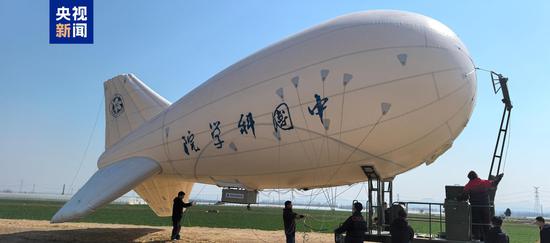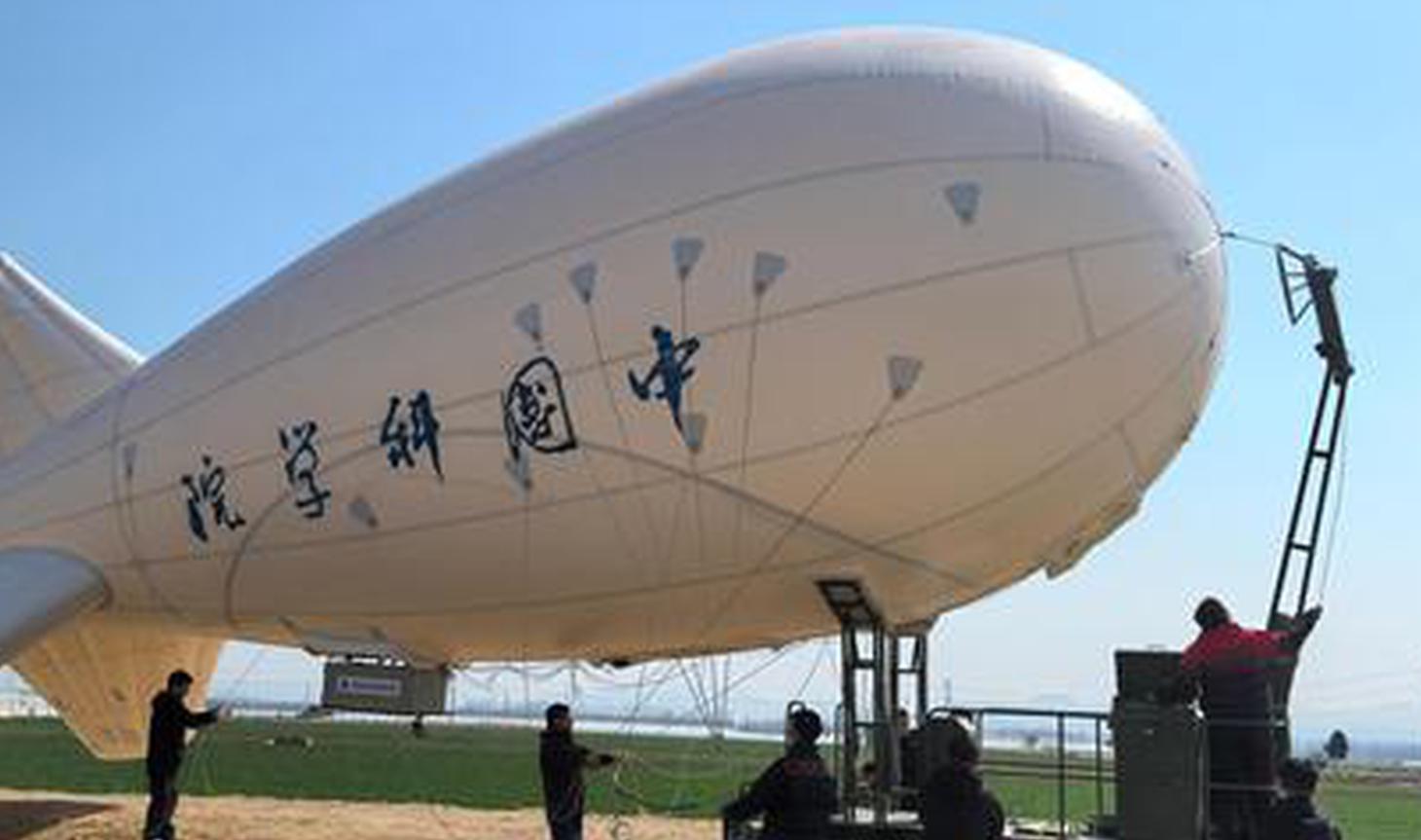China first uses aerostat to assist in power infrastructure construction

(ECNS) -- A tethered balloon was deployed on Wednesday at the site of a 500-kilovolt power transmission project for a UHV converter station in Tai'an, Shandong Province, marking the first time that an aerostat has been used during power infrastructure construction in China.
The KX15 tethered balloon, developed by the Qilu Aerospace Information Research Institute, will help the 500-kilovolt power transmission project at the ±800 kV Dongping UHV converter station.
As the project has reached its final stage of acceptance and defect resolution, it faces challenges including a large operational area, numerous risk points, and excessive personnel.
Usually, safety management personnel at such operational sites typically relied on telescopes and drone inspections for supervision. However, due to limitations in distance, perspective, and endurance, it was difficult to fully monitor the complex activities both on and around the towers.
The application of an aerostat has solved these problems through leveraging advantages including precision, covering a wide area, and long endurance, which has established an all-round, and multi-level three-dimensional tower control system.
With a volume of 159 cubic meters and a maximum load of 75 kilograms, the KX15 tethered balloon offers a number of advantages as it can be deployed on site by only four people.
For example, the tethered balloon is equipped with a professional-grade camera that features omnidirectional rotation, visible light and infrared switching, visible light zoom, and infrared magnification.
At an altitude of 150 meters, it can clearly identify personnel within a radius of 5 kilometers and simultaneously monitor more than 10 operational points.
With a maximum altitude of 300 meters, and at 100 meters, it can cover an area with a radius of 36 kilometers. This effectively addresses the challenges of managing multiple construction sites and crossing complex environments during power infrastructure projects.
Additionally, it boasts an extended endurance. Powered and transmitting signals through its tether, the device can remain continuously airborne for over 7 days, far exceeding the endurance of ordinary drones.
The Qilu Aerospace Information Research Institute specializes in the development and application of tethered balloons. Their products can carry a maximum payload of 1,800 kilograms, reach a maximum altitude of 5,000 meters, and cover a maximum radius of 252 kilometers. These capabilities meet the monitoring needs of various fields, including low-altitude defense, ground observation, meteorology, hydrology, and disaster warning. (By Zhang Dongfang)

